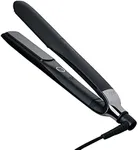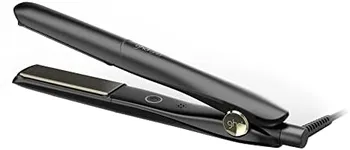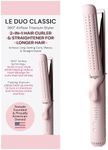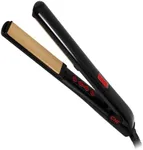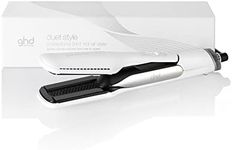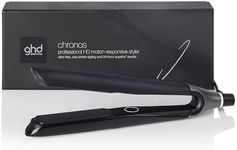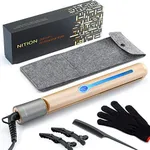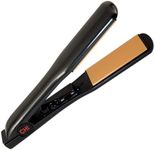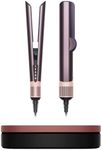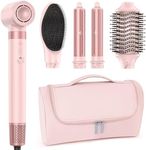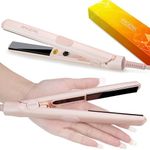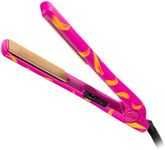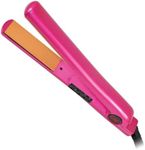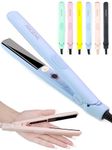Buying Guide for the Best Travel Hair Straighteners
Choosing the right travel hair straightener can make your trips much easier and help you maintain your hairstyle wherever you go. When shopping for a travel hair straightener, it's important to focus on features that make it portable, easy to use, and effective for your hair type. Understanding the key specifications will help you find a straightener that fits your needs and travel habits.Size and WeightSize and weight refer to how compact and light the straightener is. This is important because a travel hair straightener should fit easily into your luggage or handbag without adding much bulk or weight. Generally, travel models are smaller and lighter than regular ones. If you travel with only a carry-on or need to save space, look for mini or slim designs. If you have more room or thicker hair, a slightly larger model might be more comfortable to use. Think about how much space you have and how much weight you’re willing to carry when making your choice.
Dual VoltageDual voltage means the straightener can work with both 110-120V and 220-240V power supplies, which is important for international travel. Without dual voltage, your straightener might not work or could get damaged in countries with different electrical systems. If you plan to travel abroad, always choose a model with dual voltage. If you only travel within your own country, this feature may not be necessary.
Plate MaterialThe plate material affects how the straightener heats up and how it treats your hair. Common materials include ceramic, tourmaline, and titanium. Ceramic plates heat evenly and are gentle on most hair types, making them a good all-around choice. Tourmaline plates help reduce frizz and are great for fine or damaged hair. Titanium plates heat up quickly and are best for thick or coarse hair. Consider your hair type and what you want from your straightener when choosing the plate material.
Plate WidthPlate width determines how much hair you can straighten at once and how easy the straightener is to handle. Narrow plates (about 0.5 to 1 inch) are ideal for short hair, bangs, or touch-ups, and are more portable. Wider plates (over 1 inch) can straighten more hair at once, which is helpful for long or thick hair, but they make the straightener bulkier. Choose a plate width that matches your hair length and your need for portability.
Heat SettingsHeat settings refer to the range of temperatures the straightener can reach. Adjustable heat settings let you choose the right temperature for your hair type, which helps prevent damage. Lower settings are better for fine or damaged hair, while higher settings are needed for thick or curly hair. If you want more control and flexibility, look for a model with adjustable heat. If your hair is easy to style, a single heat setting may be enough.
Cord Type and LengthThe cord type and length affect how easy the straightener is to use. A swivel cord prevents tangling and makes it easier to maneuver, while a longer cord gives you more flexibility in where you can use it. Some travel straighteners are cordless, which adds convenience but requires charging. Think about where and how you’ll use the straightener—if you often style your hair in tight spaces or on the go, a cordless or swivel cord model may be best.
Heat-Up TimeHeat-up time is how quickly the straightener is ready to use after you turn it on. Faster heat-up times are convenient when you’re in a hurry or need to style your hair quickly while traveling. If you value speed and efficiency, look for a model that heats up in under a minute. If you don’t mind waiting a bit, this may be less important.
